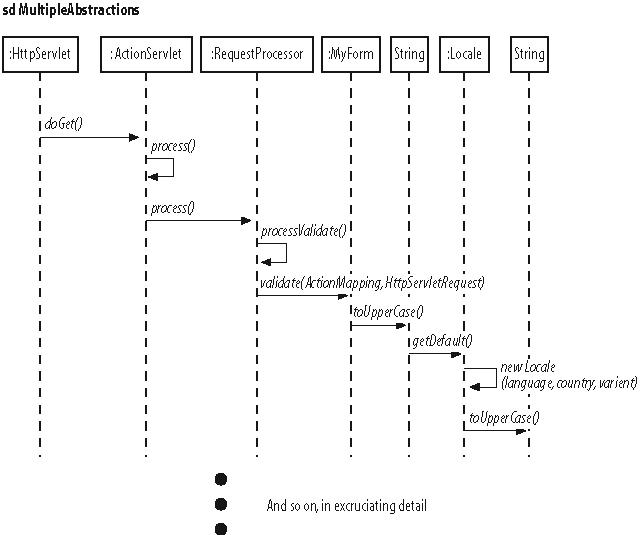Sprawling Scope
Figure 12-5 shows an example of a poorly focused sequence diagram. Sequence diagrams risk taking on too many interactions at once. This one shows the Struts interactions, the application interactions, and then the detailed workings of the Java libraries.

Figure 12-5. Sequence diagram of HTTP form processing, spanning Struts, application, and java.lang
Elements at the high and low end of this diagram are clearly out of scope of the application. One rarely cares how Struts, as an off-the-shelf framework, works. It calls the application logic at the appropriate time. Similarly, just how the internals of the standard libraries carry out their obligations normally doesn't matter in terms of understanding the application. Both the structure of HTTP request processing and the workings of Strings are God-given as far as the application developer is concerned. However, by showing a few elements that are out of scope, the diagram allows you to see the context of the application within the greater framework, and that's often useful when selecting an architecture. Similarly, drilling down into the base libraries exposes thread or performance issues. These are exceptional needs; there is no call to complicate the description of an application with these exploratory needs. From the readers' point of view, nonapplication elements just cloud understanding of the business logic, ...
Get UML 2.0 in a Nutshell now with the O’Reilly learning platform.
O’Reilly members experience books, live events, courses curated by job role, and more from O’Reilly and nearly 200 top publishers.

